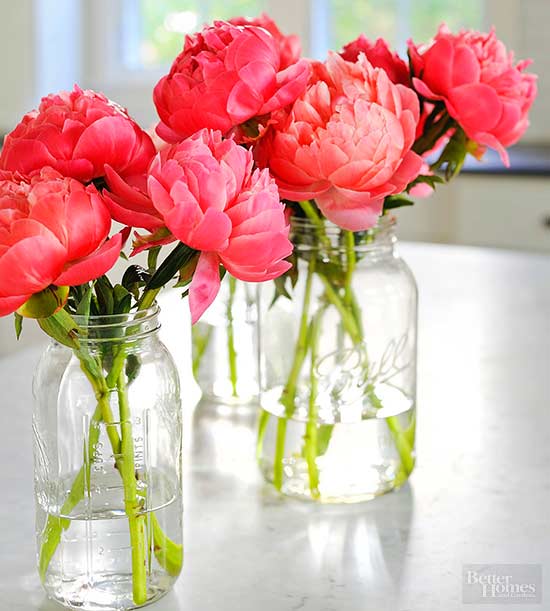






Always start with a sparkling-clean vase.
When you bring a bouquet home, recut the stems and immediately plunge the cut ends into water. Waiting to put the stems in water allows air to enter the cells of the stems, preventing water uptake. You can even cut the stems of flowers, especially roses, underwater to be sure air doesn't sneak in.
Strip off any leaves remaining underwater inside the vase. Leaves contribute to bacteria buildup in the water.
continue reading belowUse a floral preservative. It contains chemicals that stop microorganisms from growing and make water -- which is usually alkaline -- more acidic to match the cells of the flower stems. It includes sucrose to provide energy. Adding aspirin, vodka, or a sugary soft drink to the water won't help.
If you don't have a commercial preservative, try this recipe suggested by the Brooklyn Botanic Garden: 1 teaspoon sugar, 1 teaspoon liquid bleach, and 2 teaspoons lemon or lime juice mixed in 2 quarts of lukewarm water.
Add the preservative to warm water (100 to 110 degrees F) then place the bouquet in a cool spot. This allows the flowers to take up water quickly.
Change the water in the vase every day. Use fresh water, or make a fresh solution of preservative.
Snip a little off the ends of the stems every time you change the water, and remove any spent blooms.
Keep the bouquet out of direct sunlight or hot locations. Place it in the coolest spot in the house overnight as long as it is not exposed to freezing temperatures.
Avoid putting flowers in an enclosed area with fruits, such as apples, which release ethylene gas that causes flowers to wilt.
See the top perennials for cutting.
Browse the best annuals for cutting.
Learn the three secrets to cut-flower bouquets.
Learn how to make fresh-flower arrangements from your backyard.
Copyright © www.100flowers.win Botanic Garden All Rights Reserved